Top 6 Reasons Why You Need a Status Page Aggregator
Introduction
Last updated on August 8, 2025.
Your business depends on the reliability of the third-party services you use. Monitoring multiple status pages, one for each of these services, is the best way of keeping track of their outages and maintenances. Although some status pages let you subscribe to alerts, there is no standard way of doing this. Service providers can change their status page providers, disable subscriptions, or not support the same notification options.
A status page aggregator is a tool that solves all these problems by summarizing the status pages of multiple services in one place. If you depend on only 2-3 third-party services, you can probably get away without a status page aggregator. Beyond that, it becomes hard to stay on top of third-party service outages and maintenances, and leaves serious gaps in your monitoring.
Let's look at the top 6 reasons why you need a status page aggregator.
- Introduction
- Top 6 Reasons Why You Need a Status Page Aggregator
- Services Can Change Status Page Providers
- Not All Status Pages Let You Subscribe to Specific Components and Regions
- There Can Be Too Many Status Pages To Track
- Status Page URLs Can Change
- Some Status Pages Don't Have Any Way of Subscribing to Outages
- Home-Grown Status Aggregation Approaches Do Not Work
- Conclusion
- Summary - Why You Need a Status Page Aggregator
- FAQ

Download a summary of this article as a PDF
Top 6 Reasons Why You Need a Status Page Aggregator
Services Can Change Status Page Providers
Businesses use a status page provider to create a managed status page that they can use to communicate with their customers and users. Depending on business needs, provider reliability, integration options, and more, businesses can change their status page provider. The status page URL would remain the same but the format and subscription options would change.
A recent example of such a move is OpenAI's status page. In Jan 2025, OpenAI was using Atlassian Statuspage. You can check it at the Wayback Machine.
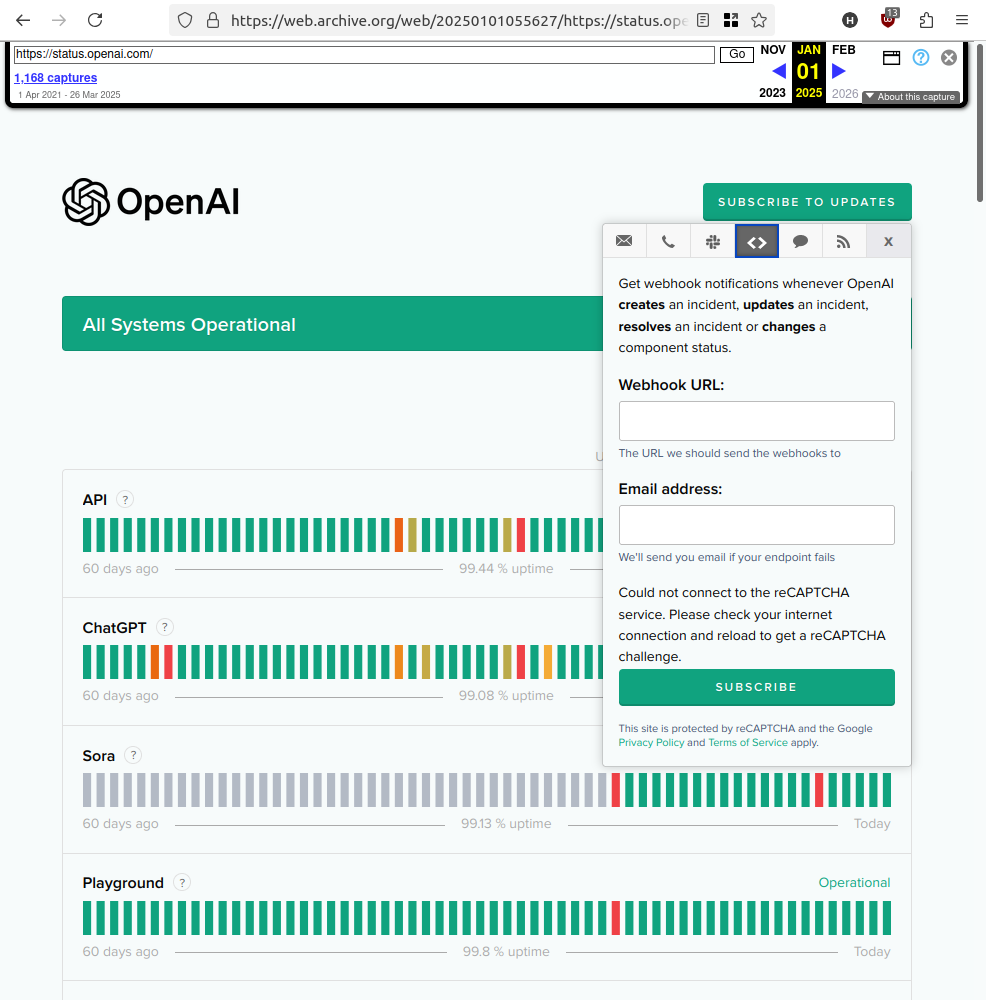
The current OpenAI status page as of this writing is managed by Incident.io. The URL remains the same.
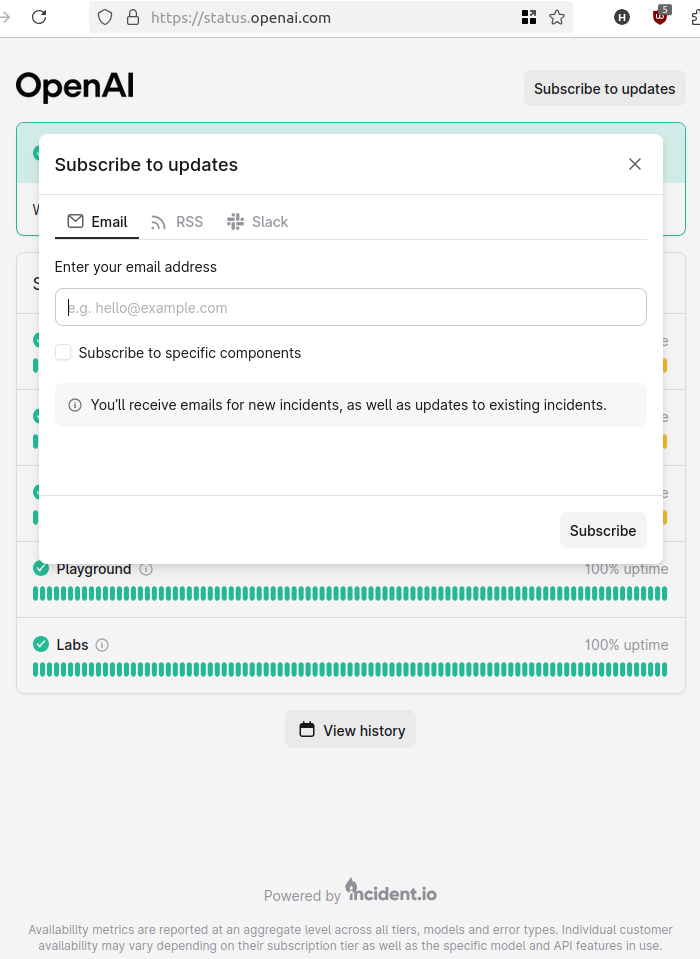
The subscription options have changed. If you were previously subscribed using webhooks, that option is no longer available.
What's more, you would not even know that this happened. Once you setup the webhook subscription, you would not visit the status page except to check for details of outages and maintenances. If the subscription were removed, you would be blissfully unaware of any future outages. That is, until the outages start affecting your applications, and by extension, your business.
You can end up with angry customers, lost revenue, and stressed SRE/Ops teams.
IncidentHub - a status page aggregator - automatically detects such changes. Using an aggregator shifts the responsibility of outage notifications to the aggregator, which can smooth over any differences in the status page providers.
Not All Status Pages Let You Subscribe to Specific Components and Regions
Your third-party cloud and SaaS dependencies would be globally distributed and have many regions of operation. Your applications use a subset of these services. Why receive alerts for everything?
Some status pages, like Stability.ai's, let you subscribe to specific components and regions.
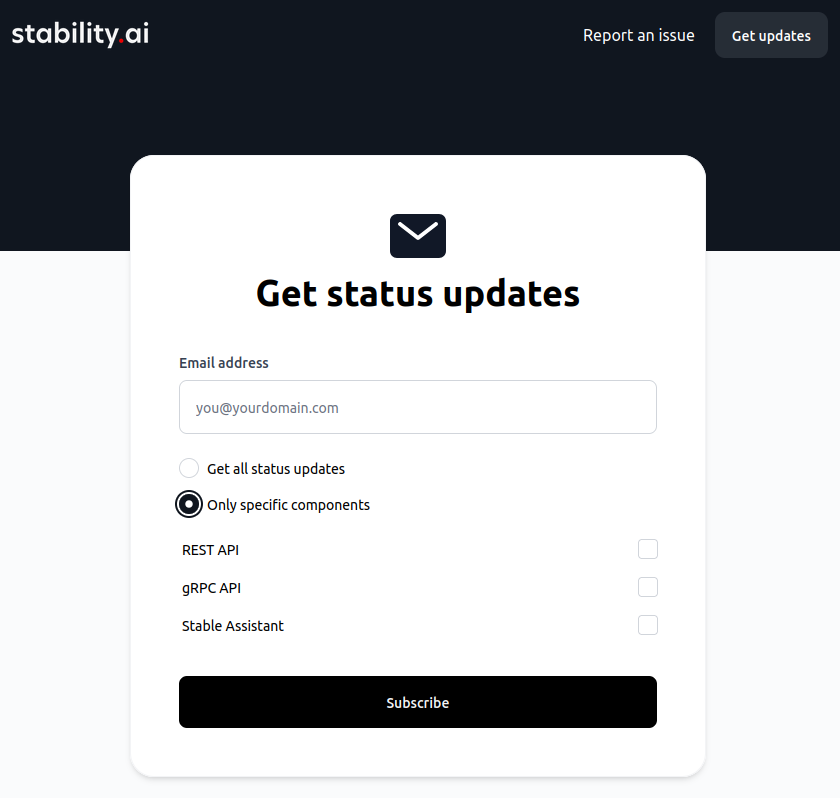
Others, like LiteLLM's status page, have an RSS feed only. If you connect the feed to your Slack channel using the /feed command, you will get notified of each and every outage in LiteLLM. There is no way to subscribe to a specific LiteLLM service from its status page.
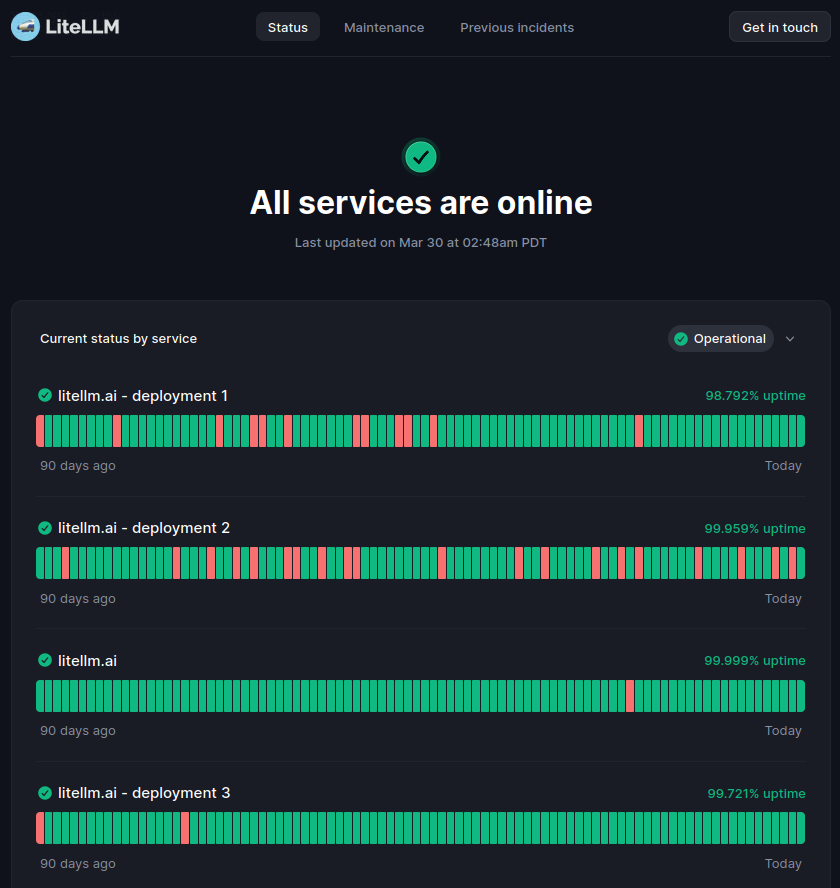
A status page aggregator like IncidentHub lets you monitor specific components and regions as long as the information is on the status page.
This is true even when the originating status page does not offer component-specific subscriptions.
There Can Be Too Many Status Pages To Track
According to the State of SaaSOps Report 2024, organizations use an average of 112 SaaS tools. Even for smaller organizations and startups, most operations are outsourced to SaaS and Cloud vendors. 100+ tools means 100+ chances of unnoticed disruptions.
Monitoring all these services manually by tracking their status pages is not only hard but also not scalable.
Status Page URLs Can Change
For various reasons, the third-party vendor's organization can change their status page URLs.
Cloudflare acquired Area 1 Security, which previously had its own status page. A few months ago, they removed the status page and Area 1's products are part of the Cloudflare status page now.
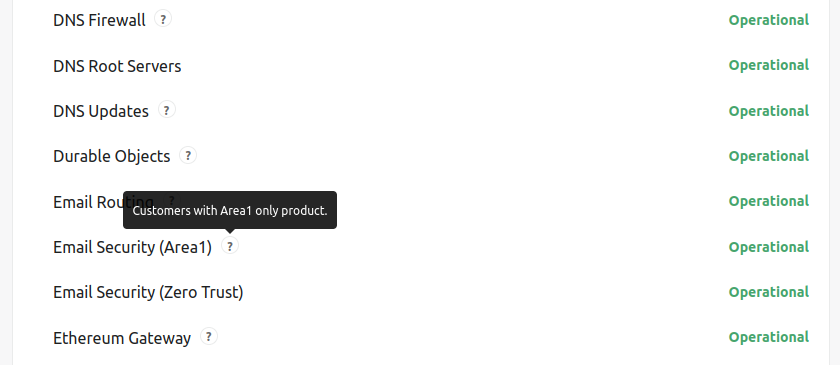
If you were previously monitoring Area 1's status page directly using just RSS feeds or email notifications, you might not have known about this change, leaving you exposed to undetected outages.
Another example is Railway's status page which moved from status.railway.app to status.railway.com.
IncidentHub detects such changes and auto-adjusts its monitoring.
Some Status Pages Don't Have Any Way of Subscribing to Outages
Most status pages have at least an RSS or Atom feed. However, some status pages don't have any visible means of subscribing to outages. You need to keep refreshing the status page. This is just not feasible if you have a lot of dependencies.
Home-Grown Status Aggregation Approaches Do Not Work
Stringing Up RSS Feeds Into Slack/Discord
Using a glue script to string up RSS feeds into Slack/Discord is a common approach. While some status pages offer RSS feeds, not all of them do. Some status pages don't have any visible means of subscribing to outages. This approach also lacks any filtering capabilities for components and regions. You cannot search through historical data easily or look at ongoing incidents and maintenance at a glance. There is no single view of all your services. Additionally, some RSS feeds won't notify you when an incident is resolved. As noted above, this will break easily when anything changes in the status page provider or URL.
Building Your Own Tool
Some engineering and IT teams choose to build their own tooling to get around the above problems. After all, why pay for a status page aggregator when you can build your own? Any self-respecting Ops Engineer/SRE would probably want to whip up a script and try to write this tool by themselves. However, such a homegrown solution requires a lot of upfront development and ongoing maintenance effort. The technical challenges themselves are significant. In addition, there are other costs:
- Any software you write needs maintenance. E.g. when your organization starts using a new service that cannot be monitored using your existing tooling, you need to add support for it.
- Somebody has to ensure reliability and uptime of the homegrown solution.
- It becomes an additional burden on your already overburdened SRE/Ops teams.
Conclusion
The challenges in monitoring multiple status pages yourself or using home-grown solutions are real. A status page aggregator like IncidentHub solves these problems by providing a reliable and scalable solution. IncidentHub adapts to status page quirks, URL changes, and more, continuously, where more basic tools can falter.
Summary - Why You Need a Status Page Aggregator
Here's a tabular summary of the top 6 reasons why you need a status page aggregator:
| Reason | Description |
|---|---|
| Services Can Change Status Page Providers | Status page providers can change (e.g., OpenAI switched from Atlassian Statuspage to Incident.io), breaking existing subscriptions and notification setups. |
| Not All Status Pages Let You Subscribe to Specific Components and Regions | Many status pages only offer RSS feeds without component/region filtering, forcing you to receive alerts for all services even when you only use specific ones. |
| There Can Be Too Many Status Pages To Track | Organizations use an average of 112 SaaS tools, making manual monitoring of 100+ status pages impractical and unscalable. |
| Status Page URLs Can Change | Status page URLs can change (e.g., Area 1 Security merged into Cloudflare, Railway moved domains), leaving you unaware of outages if you're monitoring the old URL. |
| Some Status Pages Don't Have Any Way of Subscribing to Outages | Some status pages lack RSS feeds or any subscription options, requiring manual page refreshing which is not feasible for multiple dependencies. |
| Home-Grown Status Aggregation Approaches Do Not Work | DIY solutions using RSS feeds or custom tools lack filtering capabilities, break when status pages change, and place an ongoing maintenance burden on SRE/Ops teams. |
Create an IncidentHub account to never miss an outage again.
FAQ
What is a status page aggregator?
A status page aggregator is a tool that collects and monitors multiple third-party status pages in one centralized location, allowing you to track outages and maintenance across all your service dependencies.
How many third-party services justify using a status page aggregator?
If you depend on more than 2-3 third-party services, a status page aggregator becomes valuable as it becomes increasingly difficult to manually track multiple status pages.
Why can't I just subscribe to each status page individually?
There's no standard subscription method across status pages. Providers can change their status page platforms, disable subscriptions, or offer limited notification options, making individual management unreliable.
What happens if a service changes its status page provider?
When services change status page providers (like OpenAI switching from Atlassian Statuspage to Incident.io), your existing subscription methods may stop working without notice, causing you to miss critical outage alerts.
Can I monitor specific components or regions with a status page aggregator?
Yes, unlike many individual status pages that don't offer granular subscriptions, a status page aggregator lets you subscribe to specific components and regions, reducing alert noise.
What if a service changes its status page URL?
A status page aggregator handles URL changes (like Railway's move from status.railway.app to status.railway.com) automatically, ensuring you don't lose monitoring coverage.
How do status page aggregators handle services with no subscription options?
Status page aggregators monitor status pages even when they don't offer subscription methods, and alert you using the aggregator's own notification options.
Why not build our own status page monitoring solution?
Home-grown solutions require significant development and ongoing maintenance, create additional reliability concerns, and burden your SRE/Ops teams. A dedicated status page aggregator like IncidentHub eliminates these challenges.
This article first appeared on the IncidentHub blog.
IncidentHub is not affiliated with any of the services and vendors mentioned in this article.
